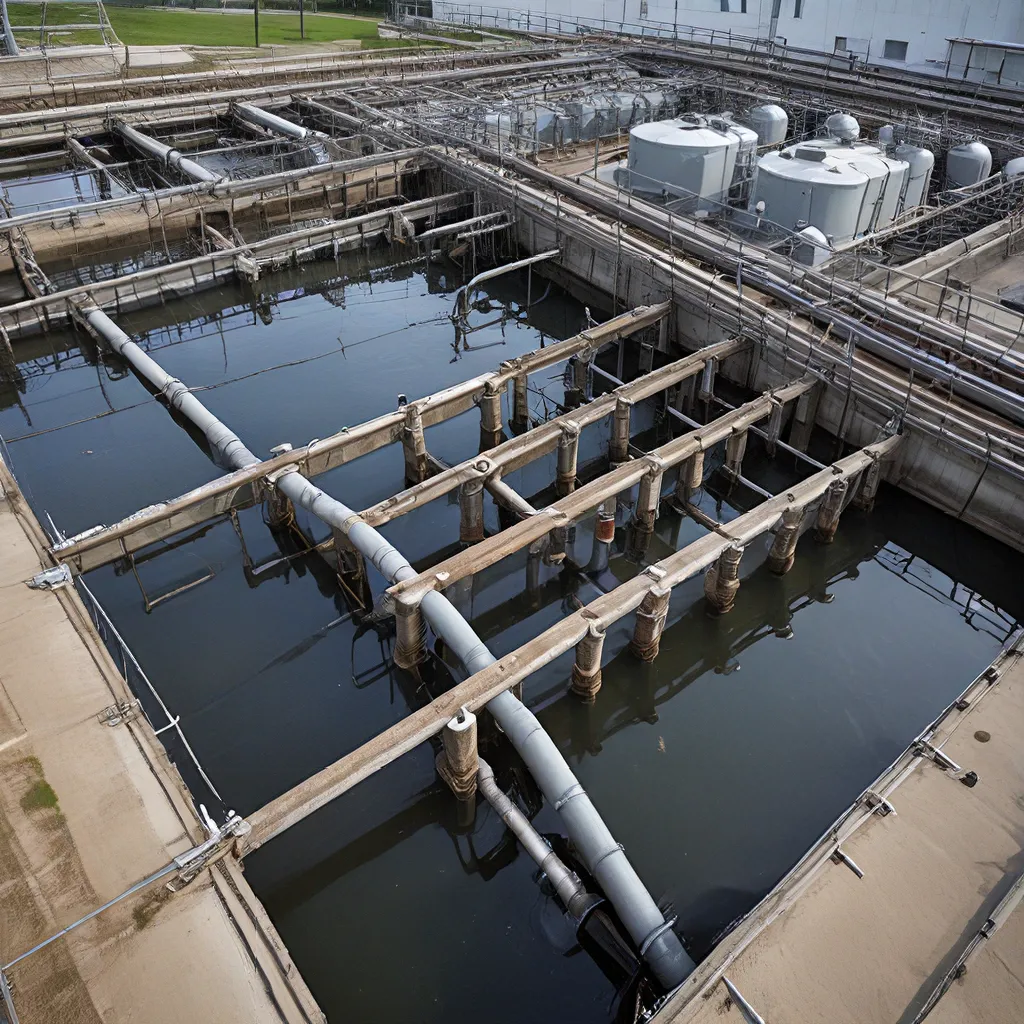
As an environmental enthusiast and someone who cares deeply about sustainable practices, I’ve been fascinated by the world of wastewater treatment for quite some time. It’s an industry that’s constantly evolving, driven by the need to meet increasingly stringent regulations, manage limited resources, and minimize our environmental impact. And let me tell you, the innovations happening in this space are nothing short of mind-blowing.
One of the key areas that has caught my attention is the integration of predictive analytics and artificial intelligence (AI) into wastewater treatment processes. I mean, who would have thought that we could leverage the power of data and technology to streamline something as complex as managing our wastewater? But that’s exactly what’s happening, and the results are truly remarkable.
Sludge Dewatering: The Unsung Hero of Wastewater Treatment
Let’s start with the unsung hero of wastewater treatment – the sludge dewatering process. This might not be the most glamorous part of the operation, but it’s absolutely critical to the overall efficiency and cost-effectiveness of the entire system. You see, the goal of sludge dewatering is to remove as much water from the sludge as possible, reducing its volume and making it easier (and cheaper) to handle, transport, and dispose of.
Now, traditional sludge dewatering methods can be, well, a bit of a headache. They often involve the use of polymers – those long-chain molecules that help bind the sludge particles together – and a whole lot of energy-intensive equipment, like centrifuges and filter presses. And let’s not forget the constant struggle to maintain the perfect balance of polymer dosage, which can be a real challenge with ever-changing water quality and environmental conditions.
Leveraging AI and Predictive Analytics for Optimization
But here’s where the magic of predictive analytics and AI comes into play. Companies like ProcessMiner are using advanced algorithms and machine learning to revolutionize the sludge dewatering process. By continuously monitoring water quality and other key operational parameters, their platform is able to autonomously adjust the polymer dosage in real-time, ensuring that the sludge is consistently dried to the optimal level.
Think about it – no more guessing, no more trial and error, and no more wasted polymers or energy. With ProcessMiner’s solutions, wastewater treatment facilities can reduce their polymer usage by up to 30% and lower their energy consumption by a similar amount. That’s a win-win for both the environment and the bottom line.
Unlocking the Power of Data-Driven Insights
But the benefits of this technology go far beyond just optimizing the sludge dewatering process. ProcessMiner’s platform also collects and analyzes an incredible amount of data, providing plant operators with predictive insights that can help them stay ahead of potential issues.
Imagine being able to anticipate changes in water quality, forecast polymer supply chain disruptions, and even proactively address regulatory compliance challenges. That’s the kind of game-changing information that ProcessMiner can deliver, empowering wastewater treatment facilities to operate more efficiently, cost-effectively, and sustainably.
Tackling Emerging Contaminants and Regulatory Hurdles
And let’s not forget about the growing concerns around emerging contaminants, like PFAS (per- and polyfluoroalkyl substances) and microplastics. These pesky pollutants are becoming an increasingly significant challenge for wastewater treatment plants, as they can slip through traditional treatment methods and end up in our waterways.
But here’s where ProcessMiner’s advanced analytics and AI-powered solutions really shine. By continuously monitoring water quality and adjusting treatment processes in real-time, these systems are able to effectively remove these emerging contaminants, helping wastewater treatment facilities stay ahead of the curve and comply with ever-changing regulations.
Embracing the Future of Wastewater Treatment
As you can probably tell, I’m pretty excited about the potential of predictive analytics and AI in the world of wastewater treatment. It’s a technology that has the power to revolutionize an industry that’s often overshadowed by the glamour of renewable energy or electric vehicles.
But the reality is, wastewater treatment is the unsung hero of sustainability. Without it, we’d be swimming in a sea of polluted water, struggling to meet the demands of a growing population and increasingly stringent environmental regulations. And with the help of ProcessMiner and other innovative companies, the future of wastewater treatment has never looked brighter.
So, if you’re like me and you’re passionate about creating a more sustainable world, I encourage you to explore the ProcessMiner website and see how their cutting-edge solutions can help transform your wastewater treatment operations. Who knows, you might just be surprised by the impact that a little bit of data and AI can have on something as essential as managing our precious water resources.